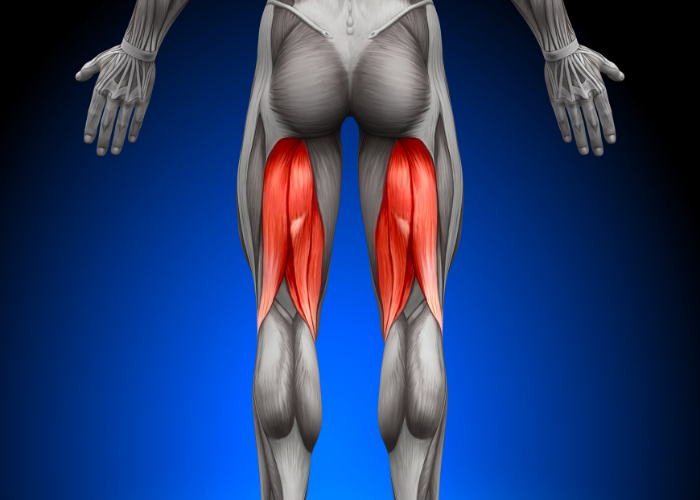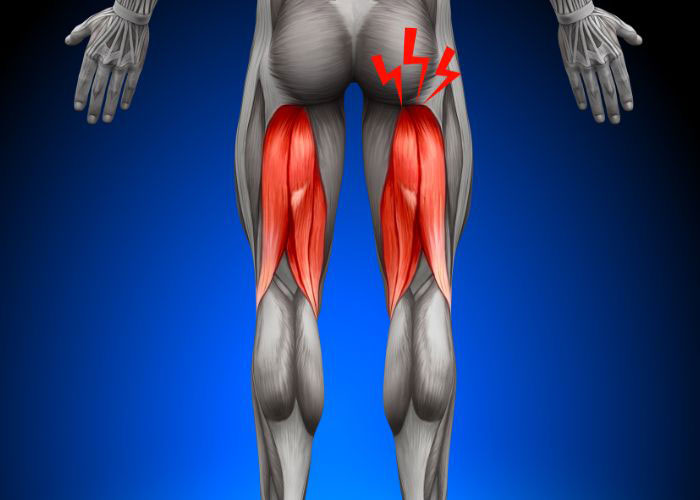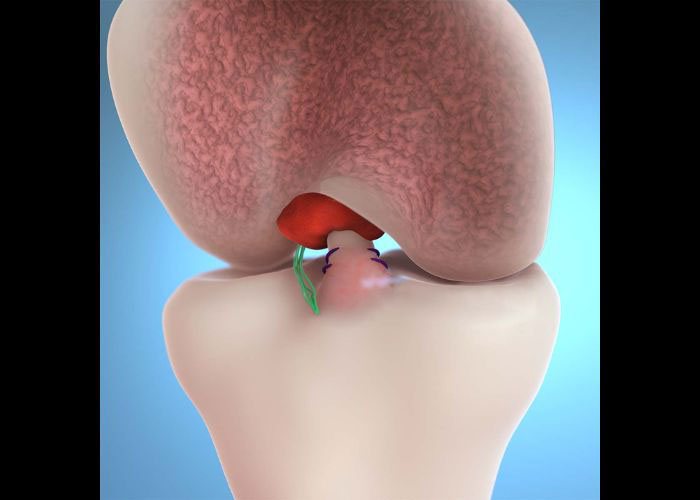What is a proximal hamstring injury?
There is a group of three muscles found on the posterior (back) thigh that are responsible for straightening of the hip and knee flexion. This muscle group, known as the hamstrings, consists of the semimembranosus, semitendinosus, and biceps femoris muscles. A proximal hamstring injury occurs when one or more of these muscles is overloaded and affects the area closest to the hip. Repetitive use of the hamstrings during physical activities can lead to inflammation of the connecting tendons. This condition, known as hamstring tendinopathy, can thicken the outer segment of the tendon and result in the tendon becoming easily torn. Athletes are the most vulnerable to a proximal hamstring injury, however non-athletic individuals can sustain a proximal hamstring injury as well. Individuals that experience a proximal hamstring injury report bruising, swelling, and pain deep in the buttocks that worsens with activities of daily living.

What is the treatment for a proximal hamstring injury?
Non-surgical therapies are often all that is needed to treat the majority of proximal hamstring injuries. These therapies include avoiding weight-bearing, non-steroidal anti-inflammatory medications (NSAIDs), and physical therapy. However, surgical intervention is indicated for patients who did not benefit from non-surgical therapy, experienced a large or complex tear within the muscle belly, or sustained a complete tendon rupture. The necessary revisions can be accomplished with a minimally invasive endoscopic procedure or by open surgery. The surgeon will review several factors, including the patient’s age, medical history, activity level, and injury severity, when constructing the appropriate treatment plan. Dr. Ronak Mukesh Patel, orthopedic hip doctor, treats patients in Sugar Land, Pearland, and the Houston, Texas area, who have experienced a proximal hamstring injury and are in need of surgical repair.
How is an endoscopic proximal hamstring repair performed?
Patients with minor hamstring injuries are the ideal candidates to undergo an endoscopic surgery. This minimally invasive procedure uses a small camera (endoscope) and specialized surgical instruments to complete the necessary repairs. To begin, Dr. Patel creates a number of small “key-hole” incisions surrounding the injury site. The endoscope and surgical instruments are inserted through portals for Dr. Patel to methodically examine the soft-tissue structures. The damaged fragments are excised and removed and the healthy tissue that remains is fastened back into the correct anatomical position with special surgical anchors. If the injury is located within the muscle itself, Dr. Patel will diligently suture the fibers back together.
How is an open proximal hamstring repair performed?
The standard of care for surgically repairing proximal hamstring injuries is through an open surgical approach. This technique involves a slightly larger incision over the site of injury for Dr. Patel to visualize the entire muscle group while conducting the necessary revisions. The open surgical method is implemented for patients with damage to more than one tendon or recurrent proximal hamstring injuries.
Periodically, some patients may experience substantial muscle atrophy from tendon retraction. This is typically the consequence when there is a significant delay between the injury and surgical treatment. In these particular instances, a tendon graft is harvested from either the patient (autograft) or a donor (allograft). This tendon graft can be sewn into the native tissue to lengthen the tendon or can be used to reconstruct the tendon in its entirety.
What is the recovery period like after a proximal hamstring repair?
The severity of the hamstring injury in addition to the surgical technique performed can determine the recovery period following a proximal hamstring repair. Most patients can anticipate a full recovery with a return to normal activities in approximately 3 to 6 months. The patient’s willingness to follow the post-operative care instructions provided by Dr. Patel can also greatly affect the recovery process. In general, patients in the Houston, Texas area can expect:
- Weight-bearing is to be restricted for at least 6 weeks after surgery. During this period, patients are expected to use crutches and brace for assistance.
- A combination of rest, ice, and non-steroidal anti-inflammatory medications (NSAIDs) can help mitigate the post-operative pain and inflammation.
- The key to a successful recovery following a hamstring repair is active participation and completion of the physical rehabilitation program designed by Dr. Patel. This physical therapy program will focus on improving hip flexibility and range of motion.
Proximal Hamstring Repair Doctor

Are you an athlete who participates in sports that require a “push off” from a stopped position? Basketball, football, running and soccer are typical sports where hamstring injuries occur during the push-off phase. Symptoms of a hamstring injury include deep buttock pain, swelling, bruising and a sharp, sudden pain in the back of the thigh at the time of injury. Proximal hamstring repair surgeon, Doctor Ronak Mukesh Patel, provides diagnosis as well as surgical and nonsurgical treatment options for patients in Houston, Sugar Land, and Pearland, TX who have suffered a proximal hamstring tear. Contact Dr. Patel’s team today!








